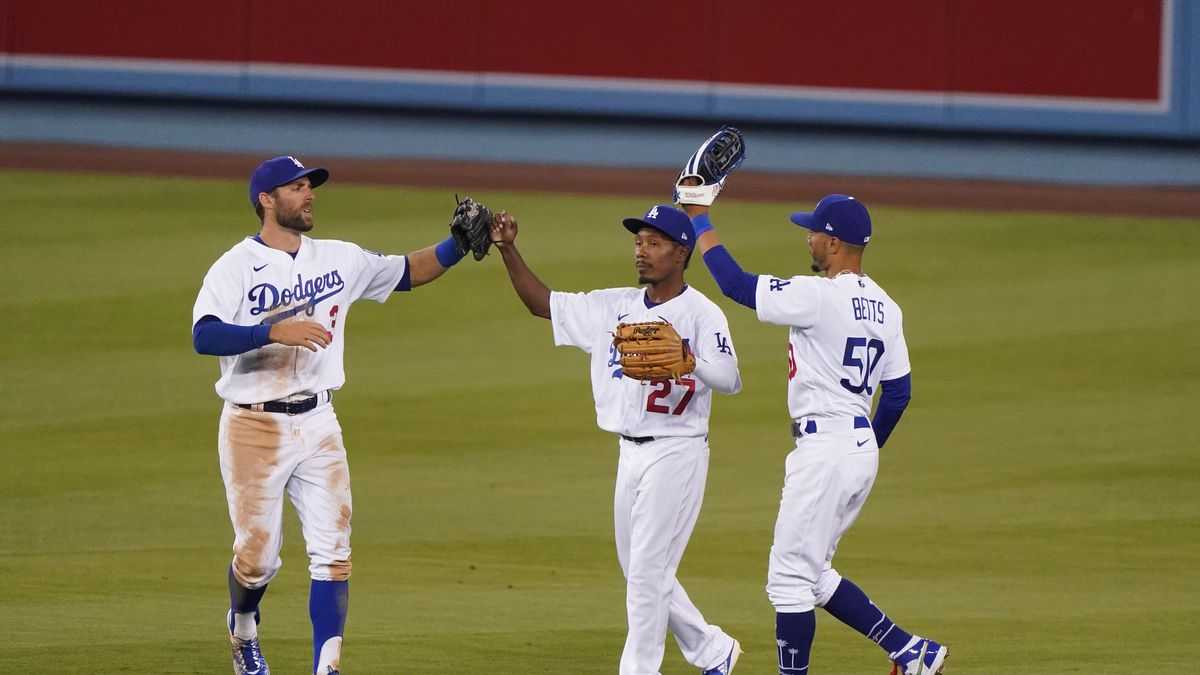Here is your heads up: this is an X’s and O’s heavy read. It has some pictures, requires a basic understanding of basketball schematics, and helps break down some trends the LA Lakers already have shown in play. No, it doesn’t involve talking to their staff or investigative reporting… but it does look at what they did in Game 5 against Denver and looks at how that could be used against the Miami zone, which is a 2-3. So there’s the heads up!
#ZoneIsForCowards originated in college basketball, where schools (most notably Syracuse) ran a zone as a way to hide bad defenders. Cowards hid behind a zone, hoped the offense missed while they were in good rebounding spots, and used those bad defenders, who rested on defense, to outscore opponents. While that is certainly still a reason to use a zone defense in college, you’ve seen a lot of NBA coaches grow the zone defense principles to simultaneously hide bad defenders and throw wrenches in traditional NBA offenses. Zone defense was not even allowed in the NBA until the 2001-02 season. Naturally, nearly 20 years later, it’s being utilized in the same way a pitcher throws a change-up. It’s an alternate coverage that can force an offense to change, slow down, or even stop.
The Miami Heat gave the Boston Celtics fits in the Eastern Conference Finals with a 2-3 zone that featured two long rangy defenders, traditionally on the backline, in the front. The length got hands in passing lanes against smaller guards. This was no more obvious than in Jimmy Butler’s Game 2 steal, where his efforts on defense led to a dunk and a huge momentum swing.
Los Angeles certainly has the size to avoid getting swallowed up by this zone. The Lakers start 6’8” LeBron James, 6’5” Kentavious Caldwell-Pope, 6’6” Danny Green, 6’10” Anthony Davis, and either 7’0” Javale McGee or 6’11” Dwight Howard. Along with a 6’1” Rajon Rondo, they pull 6’5” Alex Caruso and 6’8” Kyle Kuzma off the bench. They’re huge. Miami may not want to use the same zone for that reason alone. But if they do… the answer for LA may actually be to go small and run the same set they finished Denver with.
Lakers Sets vs Denver
Against Denver, with LeBron James as the point guard, the Lakers ran what’s called a 1/2/5 (point-guard / shooting-guard / center) double drag that put Denver’s big men in a bind. In Game 5, the adjustment was to put Davis in the near corner, have the center roll to the basket, and Danny Green pop out to pull the defense. Denver played drop coverage, James and McGee or Howard (in the example below, it is Howard) had a 2 on 1 diving at the cup. If Davis’ defender helped, Davis was open in the corner. If the whole action collapsed the defense, Green was open at the top of the key.
What made this as dangerous as it was is LeBron’s use of pace. LeBron varied what “gear” he attacked with, keeping the defense on their toes. He hit a deep two-point jumper when they ran this action to the left, watched the defense collapse for his own three-pointer at the top (Green slipped the screen, he and LeBron essentially swapped places), and attacked the cup while Nikola Jokic struggled with deciding who to defend at the rim. The defense had to respond at the pace LeBron was playing, which gave the Lakers the advantage.

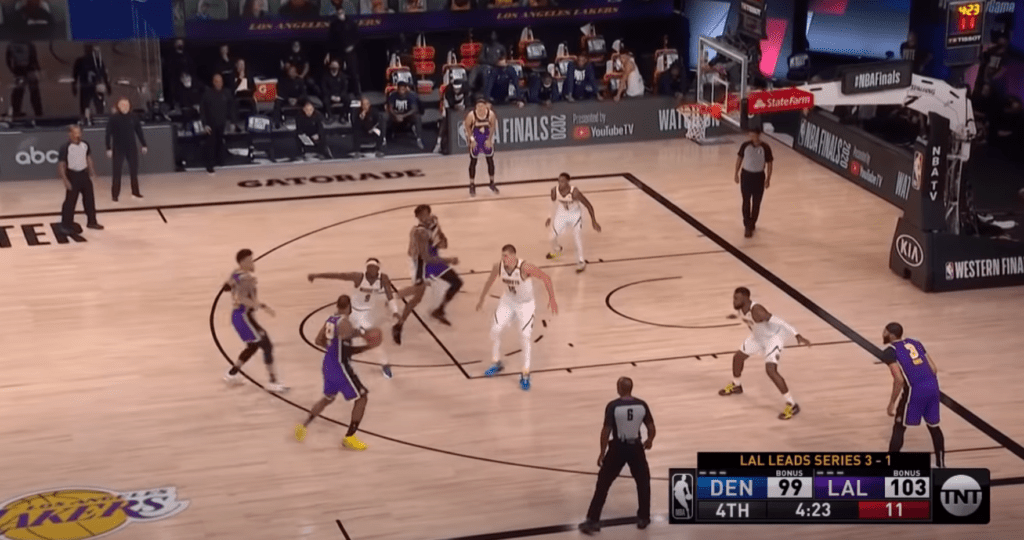

In the above example, the defense followed LeBron James and left an open Danny Green behind them for three. In switching man defense, Jokic ½ took LeBron, and ½ protected the lob. Jamal Murray rolled to cover the back half of the lob to Dwight. At the same time, Jerami Grant pursued LeBron to be sure he couldn’t hit a pull-up jumper. Danny Green shot 38 percent from behind the arc this year and knocks this one down. Three points to the purple people eaters (of all five of their uniforms this year, I’m not sure why they wore this one in a close-out game).
How Could the Miami Zone Adjust?
Bam Adebayo presents very different problems at the rim than Jokic does, and the length of their front end defenders indicate Miami will not have this trouble. Further, a zone has drop defenders lined up to protect the rim. Theoretically, with a limited big man like Javale McGee or Dwight Howard, a 2-3 zone should sufficiently stop this set. But LA can run a similar set, with slightly different personnel, that can yield an even more dangerous result, by moving Davis into one of the screeners. And it’s not much different than the way they ran double drag during the regular season.
Anthony Davis has typically been involved, for LA, in a 1/2/4 (point-guard / shooting-guard / power-forward) double drag. In this set, the power forward (the four) gets a whole half of the court to isolate, potentially. LeBron’s penetration pulls defenders with him, and a baseline runner clears out the backside for Davis by running off of a screen set by the center. The point of this, for today’s argument, is that Davis has been the roller, even if it is against various forms of man defense.

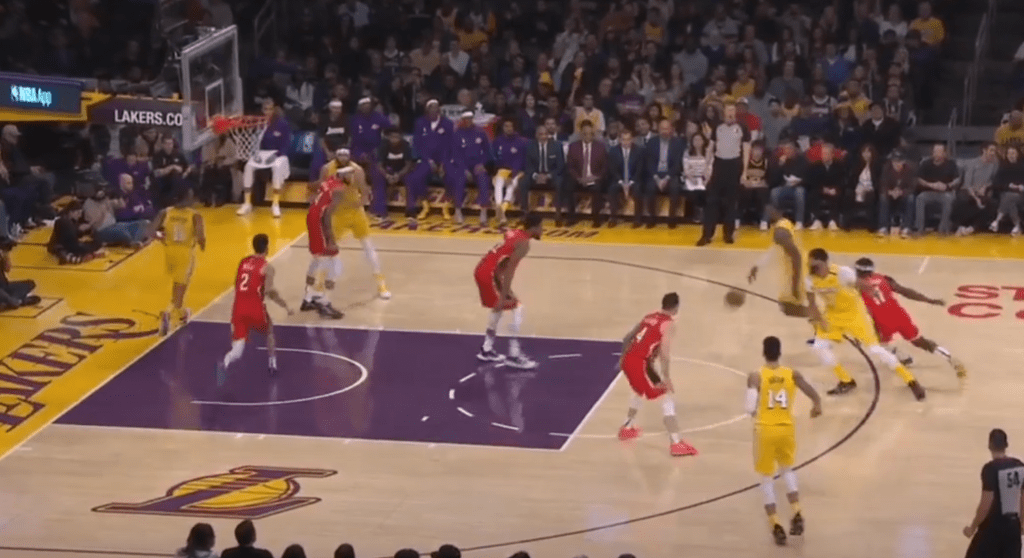
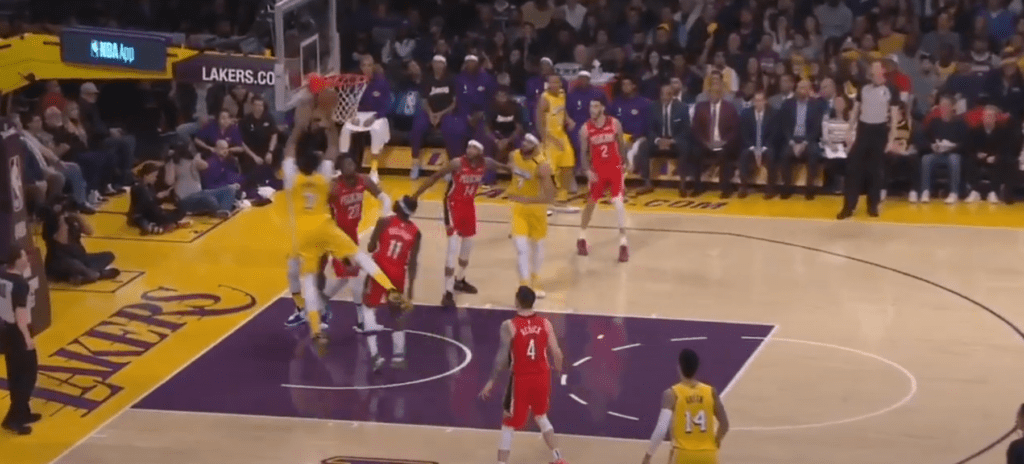
While lobs are a lot of fun, what makes Anthony Davis special is if you protect against the lob, he is still a threat with the ball in his hands. For example, this year Milwaukee decided on the 1/2/4 double drag, they were going to protect the rim. They have versatile size, so it made sense. The Lakers went to a smaller lineup, making it a 1/2/5 double drag against the Milwaukee man defense. This allowed for more rim space.
Once Davis caught the ball, he had half the floor to himself in the high post. Time for Davis to eat.



In combining these two sets, the 1/2/5 and 1/2/4 double drags, Los Angeles actually has the answer to unlocking the Miami zone. In the 1/2/5 double drag, LA has figured out how to successfully occupy the back row of the zone and put them in a conflict between collapsing or contesting. Going small, and allowing Anthony Davis the middle of the floor, the Lakers can attack the cushion of the zone: the high post.
How This Will Look Against the Miami Zone
Now, in the super-advanced-high-tech-graphics below, we used the Lakers’ small-ball starting lineup from the Houston Rockets series. In that series, Houston won Game 1 in a dominating fashion against the Lakers traditional lineup, LA shifted to their own small-ball lineup for Game 2, and went on to win four straight. The starting lineup for Miami is based on what they’ve gone within the NBA Playoffs. Yes, in the regular season they used Kendrick Nunn. Yes, Tyler Herro has played a significant bench role. But, in a 12-3 run through the Eastern Conference, this has been who they’ve started.
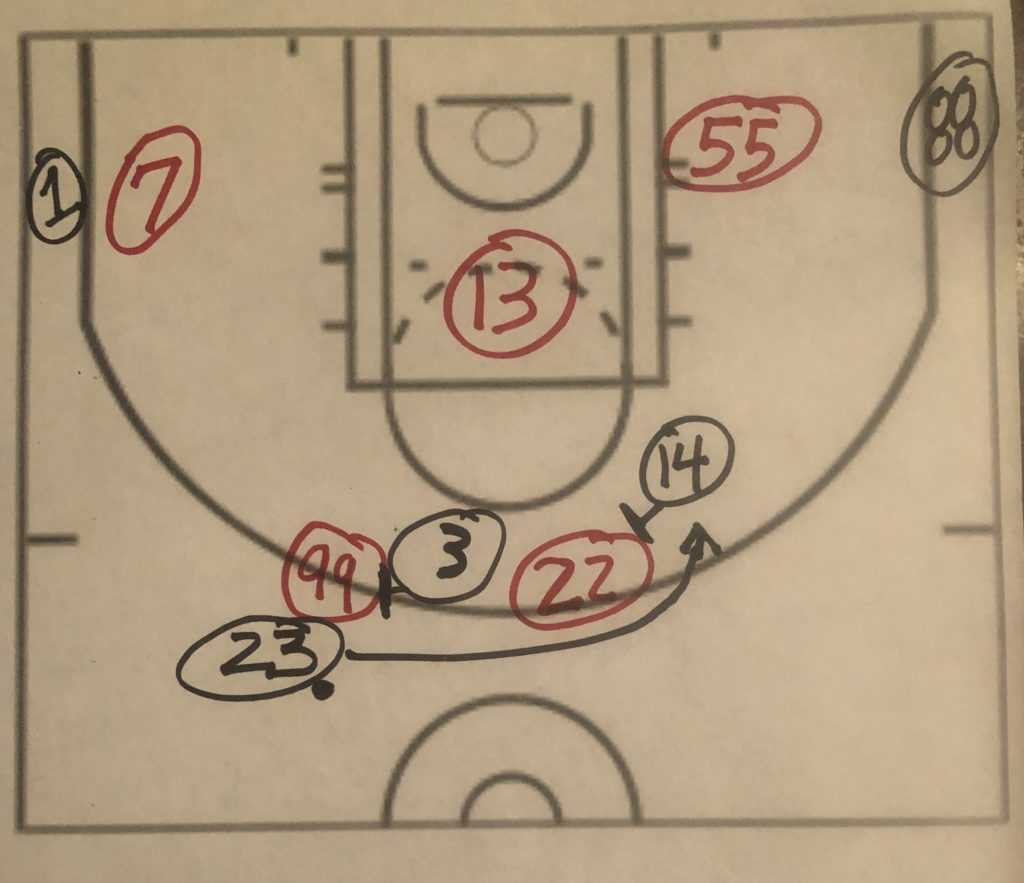
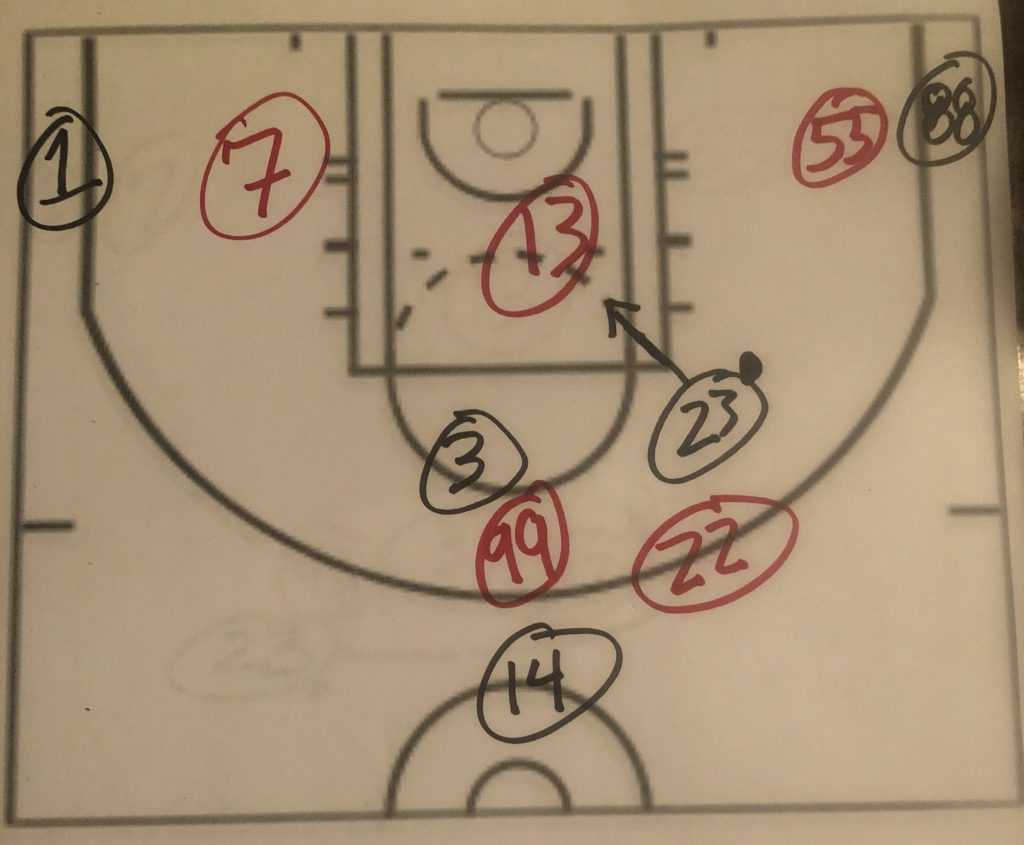
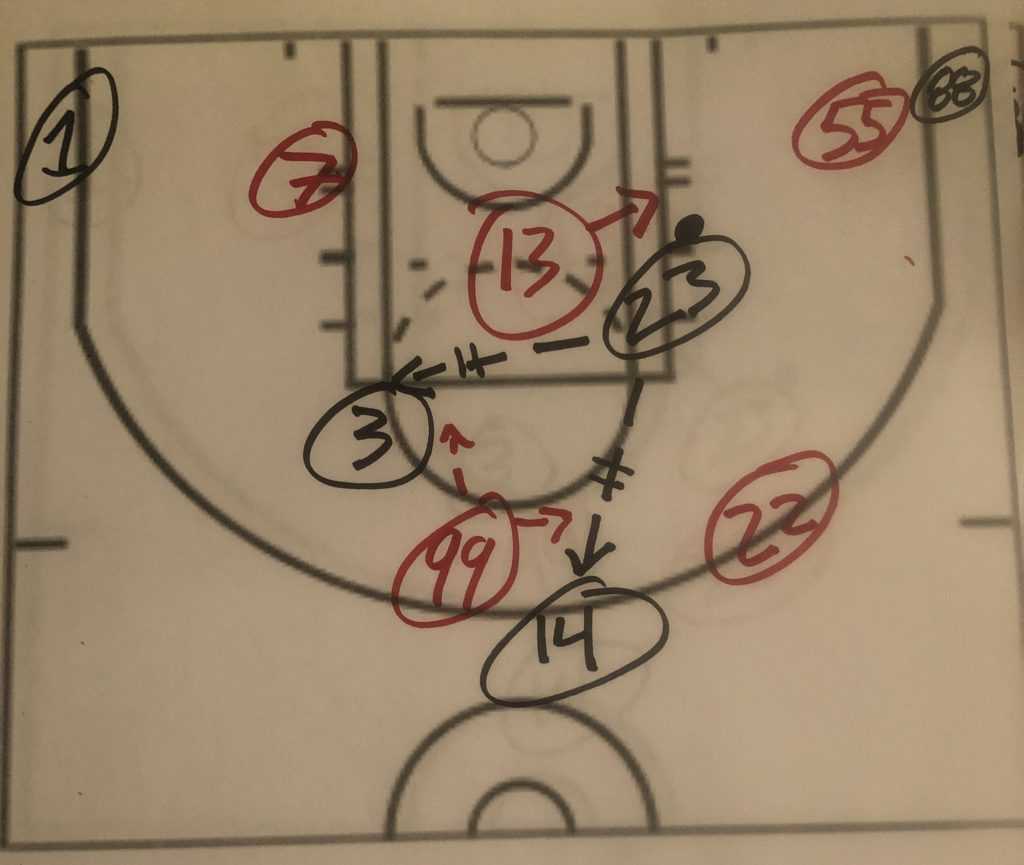

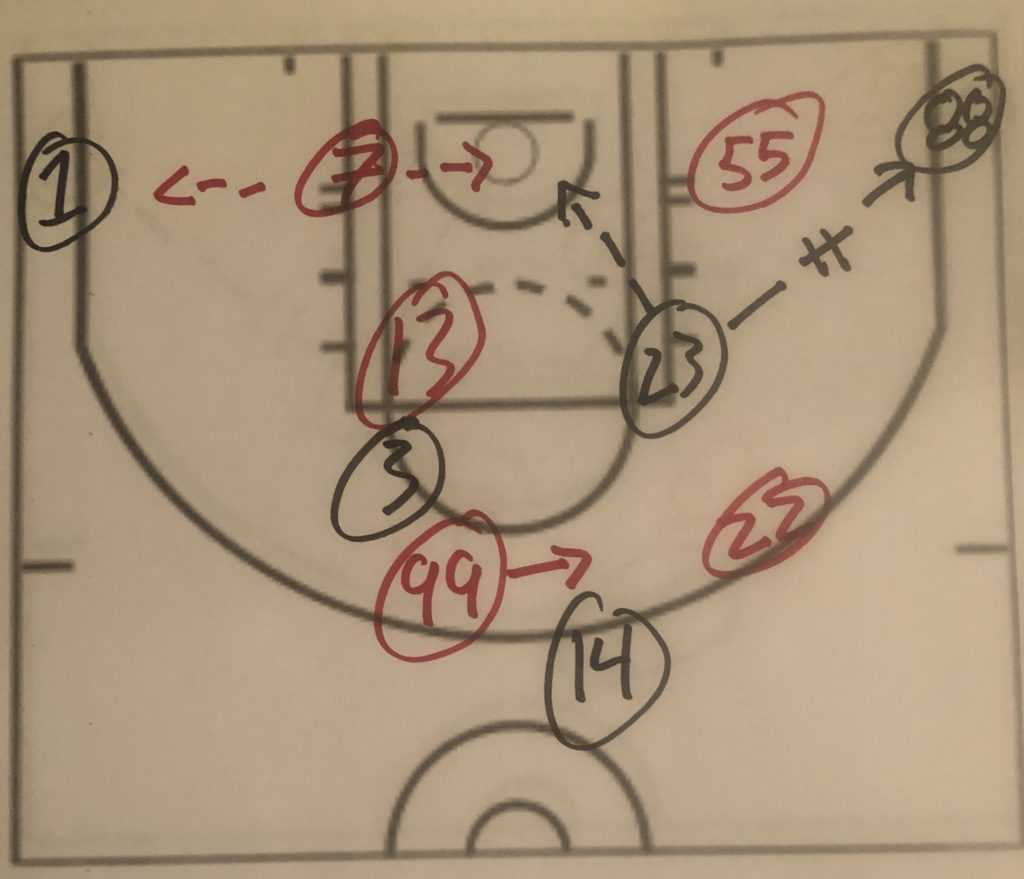
The 2-3 zone begins to collapse when you attack it in its center. While LeBron James is the future Hall of famer with all of the NBA Finals experience, the key for the Lakers to unlocking this zone is going to be getting Anthony Davis into that middle spot. By using a short roll, not the full roll the big man traditionally takes. It will force the Heat zone to break rules and principles. Miami’s strength, the front two of this defense, are the longer and better defenders. But can their length or strength throw off LeBron James as a point guard? If they can’t dictate what LeBron James can do, what would keep him from running off of a double drag? The double drag, then, puts the top defenders behind the ball as it attacks.
Adebayo, an incredible defender in his own right, then has to deal with a downhill LeBron James and Anthony Davis simultaneously. The only hope for Miami would be that collapsing in the smaller, weaker defenders in the corners to prevent dunks. Schematically, that opens up corner three for the LA Lakers. Practically, are we really sure that Dragic, Robinson, or Herro are going to keep LeBron James or Anthony Davis from the rim? (Note: the correct play for Miami, if they feel they have to stay in a 2-3 zone, is to force the corner threes. You have to make them beat you with Caldwell-Pope, Caruso, Kuzma, and Morris. If they do it, they do it.)
That is all to say that it’s not even a giant new play. Davis has played the roll spot, with a full roll, in the double drag action. Putting Davis in the roll spot, but only doing the short roll, would open up the middle of the zone for the Lakers in a way that the Boston Celtics failed to do because they don’t have anyone like Anthony Davis. Davis possesses positional flexibility that few in the entire NBA have. The Lakers need to use that to force a young Bam Adebayo into a tough spot. Further, it makes the smaller backline defenders choose the dunk-zone or the three-point shooters. They’ll play percentages and cover the dunk zone, but that may provide some posters on top of three-point shooting.
An NBA Finals series is a game of chess. If the LA Lakers come out and attack Miami’s 2-3 zone with a double drag and drop it to the short roll of Anthony Davis, Coach Spo will have more moves for Game 2. Then Coach Vogel and LA make their adjustments and so on… but this one is so simple, and it’s within the framework of everything LA already does. Forcing Miami to go man, and dropping out of this 2-3 zone, will be a huge leg up. Few teams have a player that could guard LeBron James or Anthony Davis one on one for a string of possessions… much less two. Forcing Miami into a man-to-man coverage will open up an entire slew of possibilities for LA. The need to force the issue with this in Game 1, and begin the chess game that ensues.
Follow me on Twitter @painsworth512 for more, and give our podcast “F” In Sports a listen wherever you listen to podcasts! Want more NBA Finals coverage? Check out my gambling predictions!


